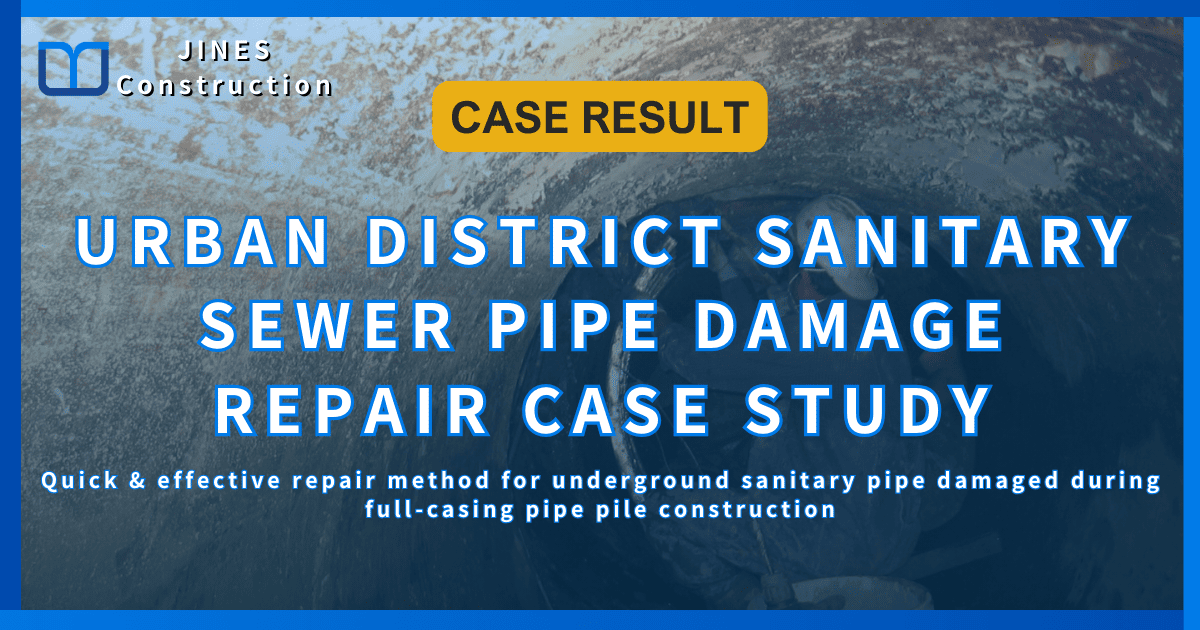
URBAN DISTRICT SANITARY SEWER PIPE DAMAGE REPAIR CASE STUDY
Quick & effective repair method for underground sanitary pipe damaged during full-casing pipe pile construction
―
1. Project Background
During the implementation of full-casing piles construction in an urban district project, a large-diameter steel casing accidentally cut into a buried in-use sanitary sewer main during excavation. This incident led to the overflow of domestic sewage into the ground, posing risks of environmental pollution and subsurface hollowing. Given the urban location of the construction site and the need to prevent safety accidents, the construction unit urgently invited relevant experts to collectively devise an emergency repair plan.
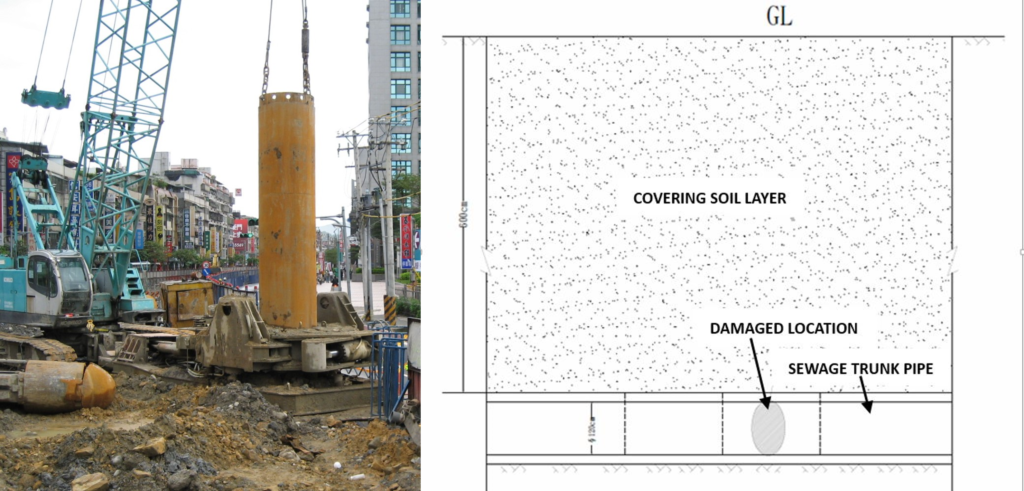
―
2. Solution
The damaged pipeline was a 1200mm internal diameter RPC sanitary trunk sewer. The central elevation of the trunk sewer was approximately 6.7m below ground level. The damaged location was about 30m away from the nearest manhole, and the surrounding ground consisted of silty clay layers. The groundwater level was around 1.0m below the ground surface.
Since this pipeline was a trunk sewer in a densely populated area, the sewage inside the pipe was almost at full capacity during peak usage times, making repair work extremely challenging. The original plan by the construction unit was to use grouting to reinforce the surrounding ground before carrying out the repair.
However, to avoid grouting materials flowing into the pipeline and causing blockages, and considering the urgency of the repair work, after analyzing the active soil pressure and short-term lateral deformation of the localized layers, experts were commissioned It was decided to use RPC (Reactive Powder Concrete) pipes with internal reinforcement, supported by an internal steel formwork, and repaired by pouring high-strength concrete outside the pipe in the damaged area.
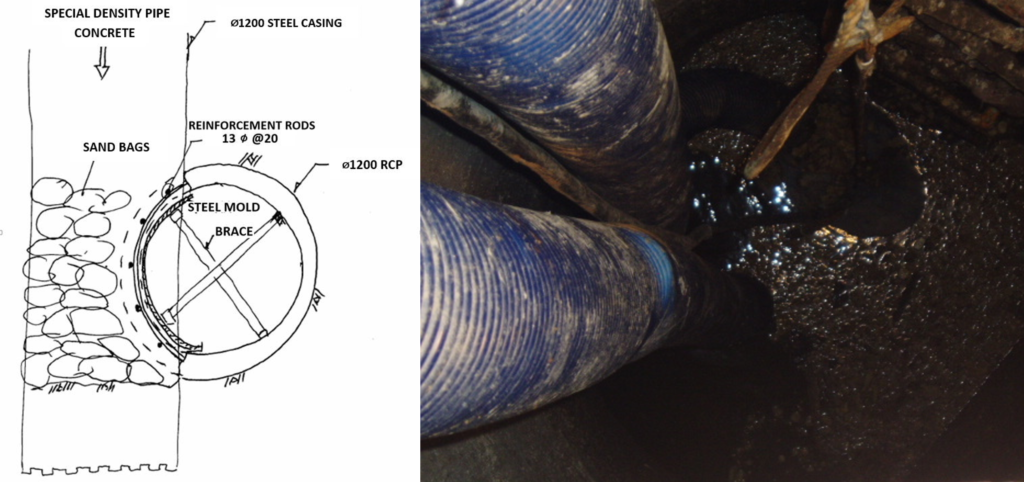
―
3. Works Design
Through internal TV photo-inspection, it was discovered that the cut section of the RPC (Reactive Powder Concrete) pipe was approximately one-fourth of the pipe diameter, and the cut surface of the pipeline was intact without any signs of fragmentation. The steel sleeve, upon discovery of cutting into the RPC pipe, remained stationary without causing excessive disturbance to the surrounding ground.
In the works design, it was planned to take advantage of the period between 1 a.m. and 6 a.m. when sewage discharge was lower. Multiple high-capacity sewage pumps would be connected at both ends of the manhole to temporarily divert the trunk sewer flow, reducing the amount of sewage in the damaged section as much as possible.
After confirming the safety of working conditions inside the pipe, specialized technical personnel were to be assigned to enter the pipeline. During the slow elevation of the steel sleeve to the top of the RPC pipe, sandbags were to be stacked to provide temporary lateral soil support. Simultaneously, the damaged area would be cleaned, reinforcement would be installed, and an interface adhesive would be applied. A combination steel formwork and lateral support would be erected.
Once each step was completed, a specially designed pipe was to be placed into the steel sleeve from the ground, and high-strength concrete with a strength greater than 4500Psi, surpassing the RPC material, would be poured. After the concrete had reached the expected strength, the steel formwork would be removed, and the surface would be polished to ensure smooth sewage flow in the future.
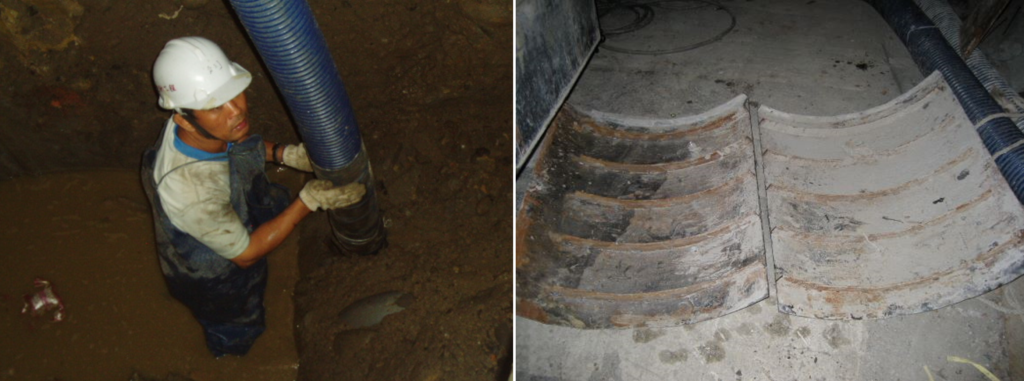
―
4. Works Process & Results
To avoid disrupting the daily lives of the public during repair work, all preparatory tasks were carried out during the day on the surface. Simultaneously, sewage pumps were used to divert and reduce the water level inside the damaged trunk sewer during the day, minimizing the environmental impact and excessive pollution of the RPC (Reactive Powder Concrete) trunk sewer due to sewage outflow.
After completing all preparatory work, various repair tasks were executed inside the trunk sewer during the late night when sewage flow was lower. Due to thorough pre-operation planning, except for the challenging conditions inside the trunk sewer, the rest of the construction process proceeded smoothly.
However, after completing the repair work, it is discovered that the RPC pipe had multiple penetration holes drilled during previous geological investigations. These holes were prone to mud and groundwater infiltration, which could have led to long-term subsidence of the ground.
After reporting to the supervising authority, special non-shrinkage cement-based sealing material was used, and the holes were filled and the surface was leveled and polished according to the provided instructions.

―
5. RESULTS
For any project that involves underground drilling, there is a great concern about accidentally damaging underground pipelines, leading to nearly irreparable consequences.
In this sanitary trunk sewer repair project, the construction unit immediately halted large machinery excavation upon discovering damage, preserving the integrity of the ground and the pipeline. This allowed relevant experts and specialized contractors to quickly formulate a repair plan and proceed with its implementation.
After completing repair tasks, in accordance with the regulations of the supervising authority, an automated TV imaging device was used for internal inspection of this section of the pipeline. The inspection images were viewed, and upon confirming that the results met the expected goals, the repair work of the damaged sanitary trunk sewer in the metropolitan area was successfully completed.
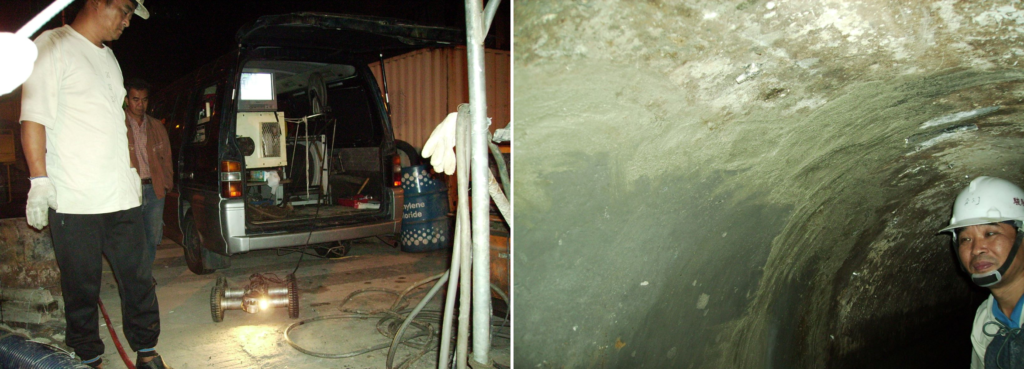
―
・More Construction Result Sharing
Contact us:+886 2769-2355